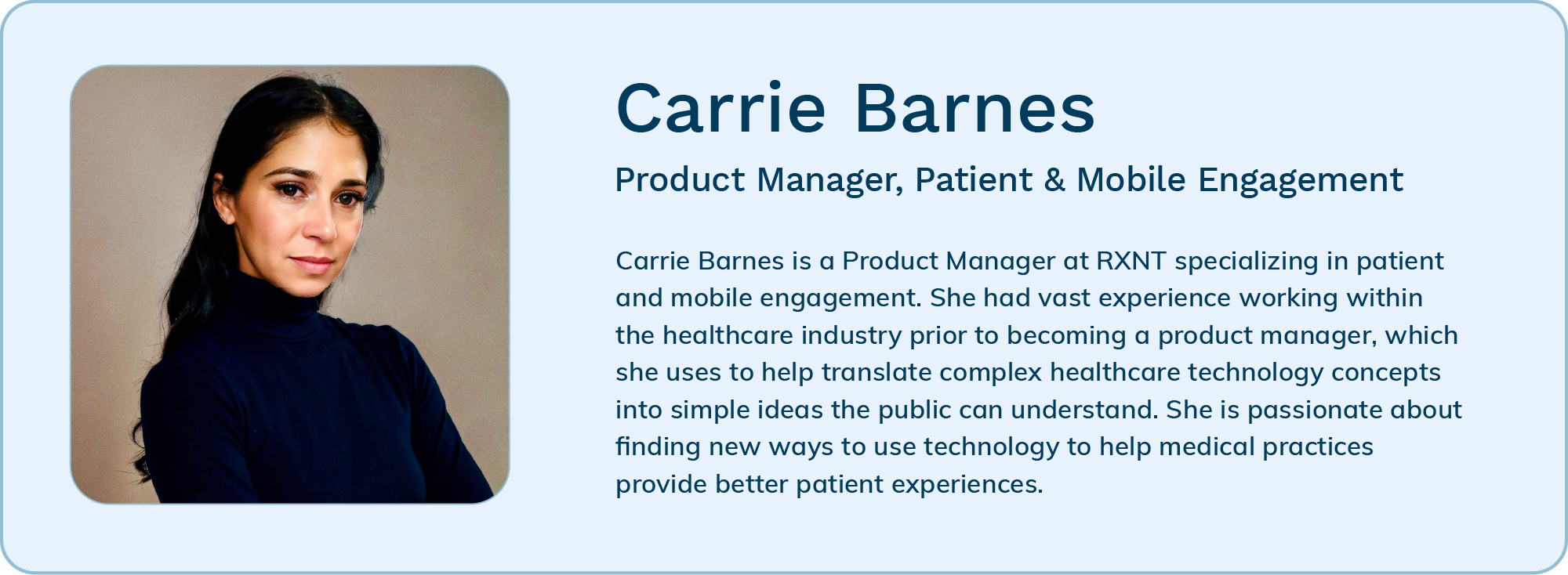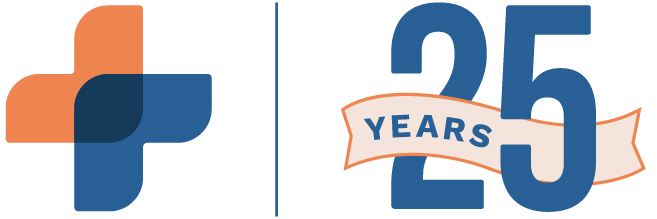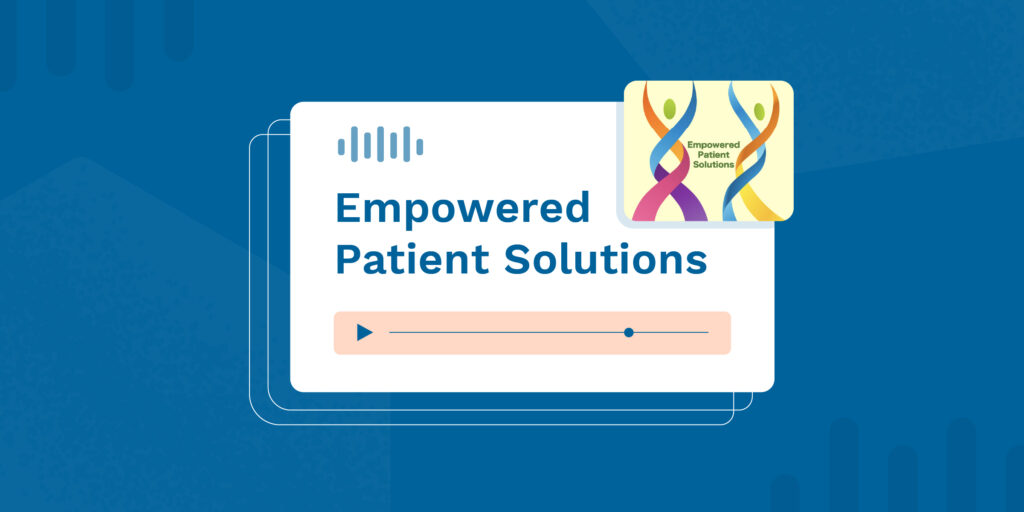As physicians look for innovative ways to engage patients and continue growing their practices, most are turning to technology to increase their capacity, specifically through automation.
Today’s world is highly personalized. Consumers increasingly expect their experiences—from what they watch and shop for to the services they expect businesses to provide—to be personalized. If not, businesses run the risk of losing customers to more relevant and competitive offerings.
The expectation is no different in healthcare. Patients want the medical practices and professionals they engage with to provide personalized service that acknowledges and accommodates their unique needs. Failing to provide personalized service can make patients feel they’re receiving one-size-fits-all care—which may lead them to seek out a provider with a more customized approach.
However, the failure to deliver personalized care doesn’t necessarily fall on the shoulders of providers; the American Association of Medical Colleges projects a shortage of at least 37,000 (and up to 100,000) physicians in the next year, which will make it increasingly difficult to offer nuanced care. This is especially true considering two-thirds of surveyed physicians agree they lose hours on mundane tasks.
As physicians look for innovative ways to engage patients and continue growing their practices, most are turning to technology to increase their capacity, specifically through automation. Below, we’ll look at how automation is being used in patient engagement, how automation software can overcome patient engagement barriers, and where it’s going next.
How Healthcare Facilities Are Automating Patient Engagement
Bringing automation software into patient engagement strategies enables healthcare facilities to streamline and improve several processes. These include:
Personalized Patient Experiences
One of the biggest ways healthcare facilities employ automation software is to create and manage personalized patient experiences. For example, providers can create tailored healthcare plans based on an individual’s unique needs, preferences, and healthcare goals—all based on data captured on a provider’s patient engagement platform and presented in an easy-to-understand report.
Patient scheduling is another example. Using automated tools, providers can send automatic appointment reminders to patients or automatically send healthcare forms before their appointments. These automatic reminders reduce patient no-shows and help patients come to their appointments more prepared. Plus, with access to a patient’s entire healthcare history, providers can better treat patients and improve healthcare outcomes.
Communication and Information Sharing
Tools such as patient portals and automated messaging allow healthcare providers to communicate with patients faster and more efficiently. Patient portals provide a single place to access health records, view test results, schedule appointments, and communicate with healthcare providers. Coupled with automated message reminders about appointments or medication, these tools allow providers to stay in touch with patients more easily.
Plus, more than half of U.S. consumers want to use mobile applications to manage healthcare appointments, prescriptions, and medical records. Because most patient portals include mobile apps, providers can deliver on this need and increase patient engagement rates.
Remote Monitoring and Support
Automation software can easily monitor a patient’s vitals (e.g., blood pressure, glucose levels, etc.) and send that data to healthcare providers. This allows providers to intervene more quickly and improve patient health outcomes. Additionally, with telehealth and virtual visits, patients can communicate with providers remotely, increasing accessibility and convenience for patients.
Treatment Adherence and Follow-Up
Automated messages and reminders can also help improve treatment adherence and appointment follow-up. For example, automated messages can remind patients to pick up or take their medication as prescribed or automate follow-up care instructions or reminders for post-treatment checkups. Patients also get the chance to ask follow-up questions, improving their overall health and lifestyle. Plus, these automated messages help reduce the risk of non-adherence, improve health outcomes, and ensure patients continue to receive necessary care.
Data Analytics for Engagement
Most patient analytic tools can quickly assess patient engagement metrics, including how often patients use patient portals, adhere to appointments, and respond to communications. This data helps facilities refine their patient engagement strategies and identify patients who may need additional healthcare support.
Predictive analytic tools can also help providers identify patients at risk of disengagement or non-adherence to treatment plans. Healthcare providers can then proactively intervene and offer targeted, tailored support.
Using Automation to Break Down Engagement Barriers
As the world becomes more digital, so do the challenges of effectively engaging with patients. From access to technology to administrative burdens, there are numerous barriers to patient engagement that healthcare providers hope to break down using automation software. Some of these include:
- Patient trust and relationship building: Building trust between patients and healthcare providers is critical for engagement, but it can be challenging in today’s digital age. Additionally, with today’s patients taking more control over their healthcare plan, most see more than one provider. This can make it difficult to establish a continuous, trusting relationship.
- Increasing digital divide: Not all patients have equal access to technology, which limits the effectiveness of digital engagement tools. Coupled with a lack of technical skills, navigating patient portals or digital health platforms can be difficult, if not impossible, for some individuals.
- Data privacy and security: According to the American Medical Association, 75% of patients expressed concern about data privacy, which can make them hesitant to engage with digital tools. Providers also have to navigate complex regulations like HIPAA to ensure patient data stays private and secure, a process that can be resource-intensive.
- Adherence to treatment plans: Ensuring patients take their medications as prescribed is a constant challenge for providers, often due to forgetfulness, side effects, or a lack of understanding.
- Administrative burdens: Complex processes and time constraints can limit the ability of both patients and providers to engage in meaningful, in-depth conversations about health, which can lead to more disengagement.
Using patient engagement software can help break down these barriers, as the technology enhances accessibility, communication, and personalization of care. For example, patient engagement software like RXNT gives patients access to a simple, intuitive patient portal to access medical information and review lab results. Providers benefit from having automated tools to automate administrative tasks like scheduling and prescription renewal requests all online. All this reduces the demands placed on office staff and makes it easier for providers to care for patients.
Another major benefit of patient engagement software is the access to data it provides. All patient interactions are stored within the platform, giving providers access to in-depth data insights that can be used to personalize and improve care.
Prepare for the Future of Patient Engagement Automation with RXNT
Automation software in patient engagement is poised to transform healthcare by furthering accessibility, personalization, and proactive care. As machine learning and AI become more advanced, providers can create more precise, tailored health interventions while improved telehealth and remote monitoring capabilities ensure continuous, real-time support. Ultimately, automation will help providers streamline administrative tasks, reduce barriers, and empower patients to take a more active role in their health management.
With RXNT, enhancing patient engagement through automation is easy. Our platform provides a comprehensive suite of tools that streamline communication, simplify appointment scheduling, and give facilities access to personalized health management tools. From contactless patient enrollment and automatic patient reminders to custom workflows, RXNT ensures patients stay informed, connected, and engaged with healthcare providers.
To learn more about RXNT’s role in transforming patient engagement, contact us to schedule a demo.






